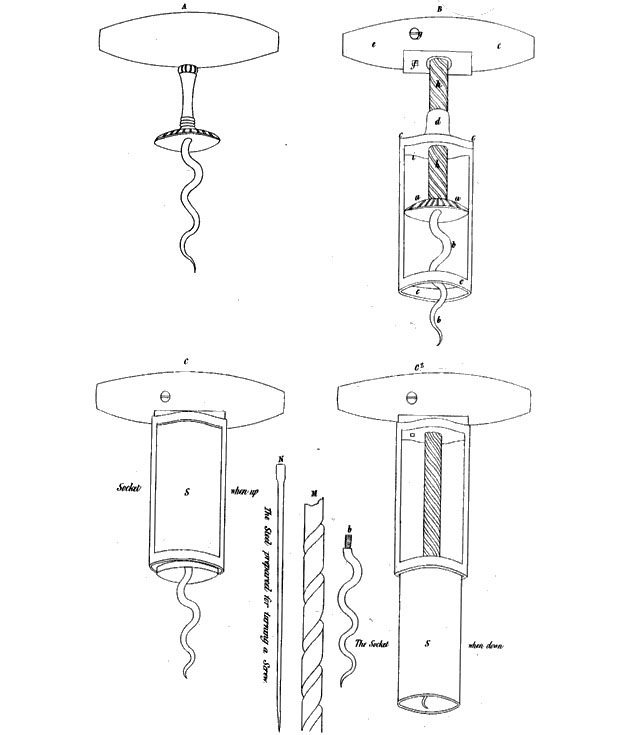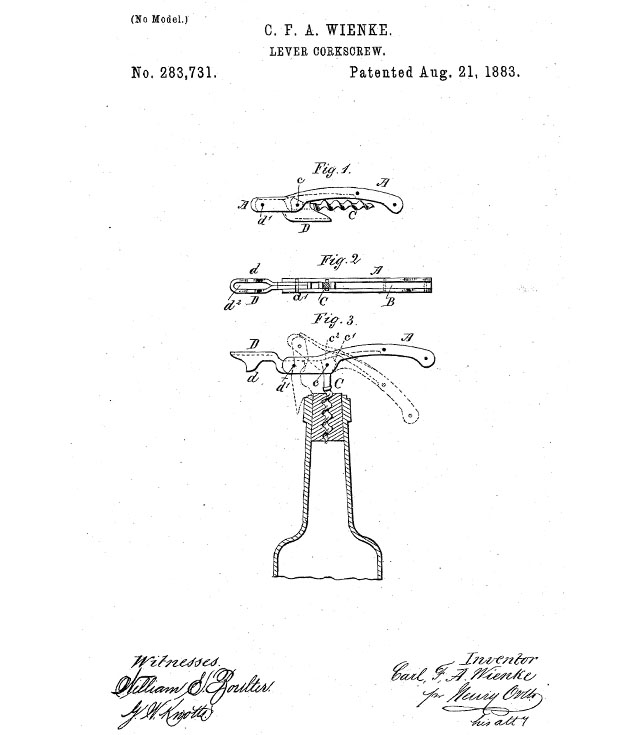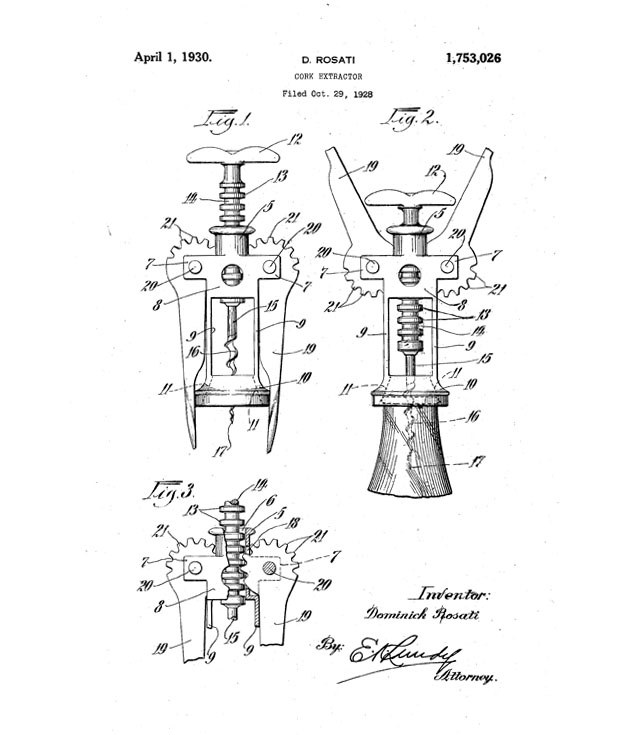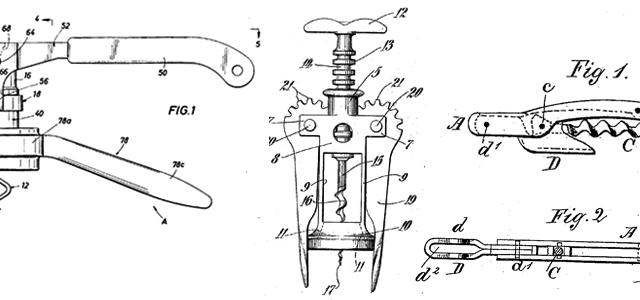The corkscrew, like so many other inventions, was borne out of necessity. For as long as we have sold wine in glass bottles sealed with cork stoppers, consumers have struggled to easily remove those corks. As soon as the earliest glass bottles arrived in late 17th-century England, inventors began dreaming up instruments to ease the removal of corks.
The earliest reference to a corkscrew was noted in the 1680s. These crude instruments — “steel worms” — were variations on musket barrel cleaning tools (gun worms) manufactured by gunsmiths. Over the next 300 years inventors would file hundreds of patents, relentlessly improving upon these first adapted corkscrews. Here’s a brief history of the most important advances.
The First Patented Corkscrew
Reverend Samuel Henshall received the world’s first patent for a corkscrew in 1795. Henshall, a religious official in Oxford, England, collaborated with Mathew Boulton, a prominent manufacturer in Birmingham, to bring his corkscrew to the market. Henshall’s key improvement on the wooden-handled steel worm was the insertion of a concave disk between the handle and the worm. The disk served two purposes: it prevents its user from screwing too deep into the cork and it forces the cork itself to turn once that limit is reached, breaking any seal between the cork and the glass neck.
Henshall’s corkscrew was so effective that it was used widely for over 100 years. Cork enthusiasts — helixophiles — claim that while Henshall may have patented the design, he likely was not its inventor, as similar models were made by others decades earlier.

Samuel Hanshell’s Patent For A Corkscrew via The Quarterly Worme — Granted 1795
Inventing The Single Direction Twist
The next key innovation in corkscrew design can be traced to another Englishman, Edward Thompson. Thompson, in an 1802 patent, documented a way to allow a user to turn the corkscrew in a single direction by employing nested screws, which turn in opposite directions. When one screw reached its limit, a second screw engaged, allowing the cork to begin its move upward. This design element made its way into many other corkscrew designs, including the famous “Zig-Zag” corkscrew.
The Waiter’s Friend
In 1882, German inventor Carl F.A. Wienke, filed a patent on the “Waiter’s Friend”, also known as a “Butler’s Friend” and a “Wine Key”. This slim, foldable corkscrew (in a shape similar to a pocket knife — earning it yet another name, the “Sommelier’s Knife”) employs a screw and a single lever. The Waiter’s Friend’s handle uses the side of the wine bottle for leverage, easing the upward pull of the cork. While this design has seen many improvements — the double hinged levers of the “Pull-Tap” prominent among them — its basic form has proved its worth, as the myriad variations remain extremely popular both with restaurant and bar professionals and home wine drinkers alike.

The US Patent Filing For Carl FA Wienke’s Lever Corkscrew — Granted 1883
The Wing
The double-lever, rack-and-pinion “Wing” corkscrew has its origins in H.S. Heely’s 1888 British patent on a corkscrew he called the A1 Heeley Double Lever. A version of this corkscrew reached the United States in 1930. Patented to Italian designer Dominick Rosati, the design remains quite popular. As you twist the screw into the cork, a pair of levers rise on each side of the bottle’s neck. When you push the levers down the cork rises. When crafted out of heavier, thicker metal it can be easy to use and quite effective. Cheap, flimsier versions can be frustrating to use, as the leverage the corkscrew should provide just isn’t there.

To read about the Modern innovations, plus an innovation that may make removing the cork obsolete, continue reading over at VinePair.
